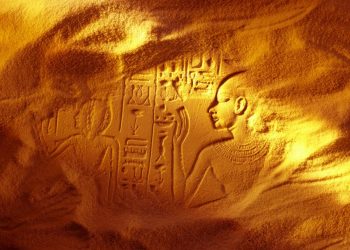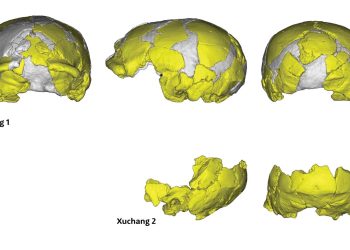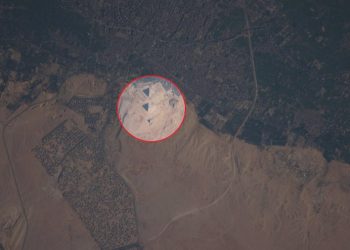In the mid-20th century, a clay jar pulled from the ruins near Baghdad quietly entered the world of archaeological anomalies. It didn’t glow. It didn’t hum. But inside the jar, researchers found something unexpected: a copper tube, an iron rod, and traces of organic residue. The components, when reconstructed, behaved like a simple galvanic cell — a primitive form of battery. Since then, the artifact now known as the Baghdad Battery has stood at the crossroads of science, history, and unanswered questions.
What was it really for? Was it evidence of ancient electrical experimentation — or just a misunderstood relic of everyday life?
The debate continues, and not just among fringe theorists. Even mainstream archaeologists agree: we still don’t know the full story. But let’s face it, there is a lot of stuff we can’t explain from ancient times.
What the Baghdad Battery Looks Like

The object was first described in 1939 by Wilhelm König, then director of the National Museum of Iraq. It had been found years earlier at Khujut Rabu, a Parthian-era site dating back to between 250 BCE and 250 CE. The artifact consisted of:
-
A small ceramic jar
-
A rolled copper cylinder inserted inside
-
A central iron rod, isolated by asphalt
-
Residue that could indicate an acidic liquid, such as vinegar or fermented grape juice
König was struck by the object’s similarity to modern galvanic cells, which can generate a small electrical current when filled with an acidic electrolyte. He proposed something radical: that this wasn’t storage or ritual ware — it was an ancient battery.
Subsequent reconstructions of the Baghdad Battery have proven the concept. When built using comparable materials, and filled with acidic liquids, the device produces between 0.5 and 1.5 volts — enough to cause a tingle or power a very small device.
But here’s where the mystery deepens.
There is no written record of the battery’s function. No accompanying tools. No diagrams. No mention of electricity in Parthian texts. Just the artifact itself — and the implications it suggests, without ever confirming them. But here is another great point I would like to make: there are also no blueprints or descriptions of the construction of the Great Pyramids. There are no markings that suggest the Egyptian pyramids were tombs. Yet most experts in the field undoubtedly think so. So a lack of written documentation or texts does not point to one way or the other.
Could Ancient People Have Used Electricity Without Understanding It?
The central debate is not whether the Baghdad Battery can function as a battery. It can — that’s been proven. The real question is whether it was ever intended to.
One theory suggests the batteries were used for electroplating — depositing a layer of metal like gold or silver onto another object. This process requires a direct current and acidic solution, which the Baghdad Battery could theoretically provide. Experiments have shown this is technically feasible, though extremely slow and inefficient.
Another idea is that it may have been used in ritual settings — to deliver a mild shock as a religious or symbolic experience. The surprise or sensation might have been interpreted as divine or mystical.
But these remain speculative. There is no direct evidence of electroplated objects from the same region and period. Nor are there any references to electroshock rituals in Parthian religious texts.
Skeptics argue that the Baghdad Battery is more likely a coincidence of form and function — a storage vessel, perhaps used for holding scrolls, sacred oil, or medicinal compounds. The presence of metal and organic residue may simply reflect non-electrical uses.
Yet that explanation, while conservative, doesn’t fully settle the question. If it was just a container, why was it engineered so precisely, with metal components that — accidentally or not — mirror modern battery design? If it were really a breakthrough technology from the past, why wasn’t it replicated in much greater numbers? Why aren’t we digging up hundreds of these? You would assume that word of such a technology would have spread rapidly across the ancient world, meaning that we would be finding many similar items all across the wide region.
The Baghdad Battery’s Enduring Mystery
The Baghdad Battery has become more than an object. I kind of see it like a case study in how we interpret the past. Because it is not the only such artifact we have discovered. We have found many artifacts of the ancient world that defy explanation, and one example of that is the Antikythera Mechanism. Oh and by the way, we also only found ONE Antikythera Mechanism. Just like with the Baghdad Battteries.
When we encounter ancient technologies that resemble modern tools, we are faced with a difficult choice: assume coincidence, or entertain the possibility that ancient civilizations experimented with principles they may not have fully understood. There’s of course that it was aliens theory, but I highly doubt aliens would have given such a lousy blueprint for a battery, right?
Having that said, there are many other examples of artifacts that sometimes we refer to to as out-of-place artifacts, including stones or ancient drilled cores, and to be honest, these raise similar questions about what knowledge may have existed — and what was lost. I firmly believe that a lot of our history is still hidden from sight. And when I say that, I do not mean Aliens. I just think that there are many secrets of our ancient past waiting to be discovered.
However, I do believe that if the Baghdad Battery were real, then it would challenge the narrative that human technological advancement has always moved in a straight line. As I have written in previous articles, I have said that history is like a puzzle, and we are far from completing it. I think that history is full of gaps, and sometimes the objects that survive don’t tell the whole story. These objects, we could argue, are just a small puzzle of a much bigger story.
Today, the battery remains on display in museums, including reconstructions in institutions like the Museum of the History of Science in Oxford. It continues to feature in documentaries, academic debates, and speculative fiction. But most of all, it continues to inspire the same question Wilhelm König asked nearly a century ago: What if? What if there is more to this artifact than meets the eye? What if ancient civilizations were far more advanced than we credit them for?
I mean, look at Göbekli Tepe. As I have written previously, this site literally breaks history and the historical timeline we have been taught in school.
Without making bold claims or unsupported leaps, I can say this: the Baghdad Battery is an object whose purpose has not been fully explained. It exists, it functions, and it refuses to be forgotten. What’s more, it tells us that there are things out there that are far from ordinary. There are artifacts from the ancient past that still await discovery. Our history is far from being understood, and I guess that is the beauty of it. The more we dig, the more we find. The more questions we ask, the fewer answers we provide. Oh, how I love history.











